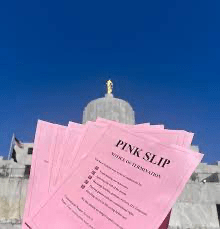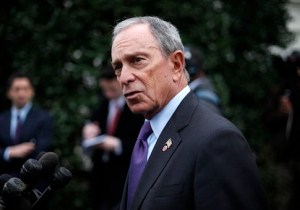David Goldberger would be appalled to see how the ACLU of Oregon has gone astray.
In 1977, he argued one of ACLU’s most controversial cases, defending the free speech rights of Nazis to march in Skokie, Ill., home to many Holocaust survivors.
I thought of him when I came across this Tweet from ACLU of Oregon last night:
📨We were back at it again today, dropping off pink slips to absentee senators. Hundreds of you have completed the form and told your legislators to get back to work! 💥We’ll keep making more pink slip deliveries. Visit bit.ly/42C5rtf to send one! pic.twitter.com/SoOasQB4UB5/18/23, 3:05 PM
In 2021, the New York Times reported on a luncheon celebrating Goldberger’s career . Goldberger was dismayed to hear a law professor argue that the free speech rights of the far right were not worthy of defense by the ACLU. He was also disturbed by an ACLU official’s argument that it was legitimate for the organization’s lawyers to decline to defend hate speech.
Goldberger, a Jew who defended the free speech of those whose views he found repugnant, felt profoundly discouraged. “I got the sense it was more important for A.C.L.U. staff to identify with clients and progressive causes than to stand on principle,” Goldberger told the NY Times.
I have the same concern about the ACLU of Oregon, which has gone astray in furtherance of a progressive political agenda and become, like the Oregon League of Conservation Voters, a wing of the Democratic Party..
The ACLU of Oregon was a key player in securing voter approval of Measure 113 that proposed disqualifying legislators from re-election following the end of their term if they are absent from 10 legislative floor sessions without permission or excuse.
Federal courts, including the Supreme Court, often refuse to hear a case if they find an issue is so politically charged that federal courts, which are typically viewed as the apolitical branch of government, should not hear the issue.
Cornell Law School cites Oetjen v. Central Leather Co. (1918) as one of the earliest examples of the Supreme Court applying the political question doctrine,. In that case, the Court found that the conduct of foreign relations is the sole responsibility of the Executive Branch. As such, the Court found that cases which challenge the way in which the Executive uses that power present political questions. Thus, the Court held that it cannot preside over these issues.
The Court broadened this ruling in Baker v Carr (1962), when it held that federal courts should not hear cases which deal directly with issues that the Constitution makes the sole responsibility of the Executive and/or the Legislative branch.
In the same context, the ACLU of Oregon is out of order inserting itself so aggressively in the political maelstrom of a Democratic effort to prevent legislative walkouts by Republicans from interfering with the Democrats’ agenda.
Trying to justify its support for Ballot Measure 113 before its approval by voters, the ACLU of Oregon argued: “Democracy is diminished when our political system does not address repeated gamesmanship and the continued manipulation of technical rules such quorum requirements, or repeated threats of this type, for the purpose of gaining a political advantage.”
The ACLU of Oregon thinks it should get involved in a ballot measure because it is concerned about “gamesmanship” and “manipulations of technical rules”. Talk about a political issue.
So now perfectly legal maneuvering by a political party to thwart proposals by another party diminishes democracy so severely that it’s acceptable to prohibit the re-election of sitting legislators?
And it’s OK for the ACLU of Oregon to blatantly encourage Oregonians to harass legislators who go against the Democrats’ agenda with “pink slips”?
The ACLU of Oregon has gone way over the line.















